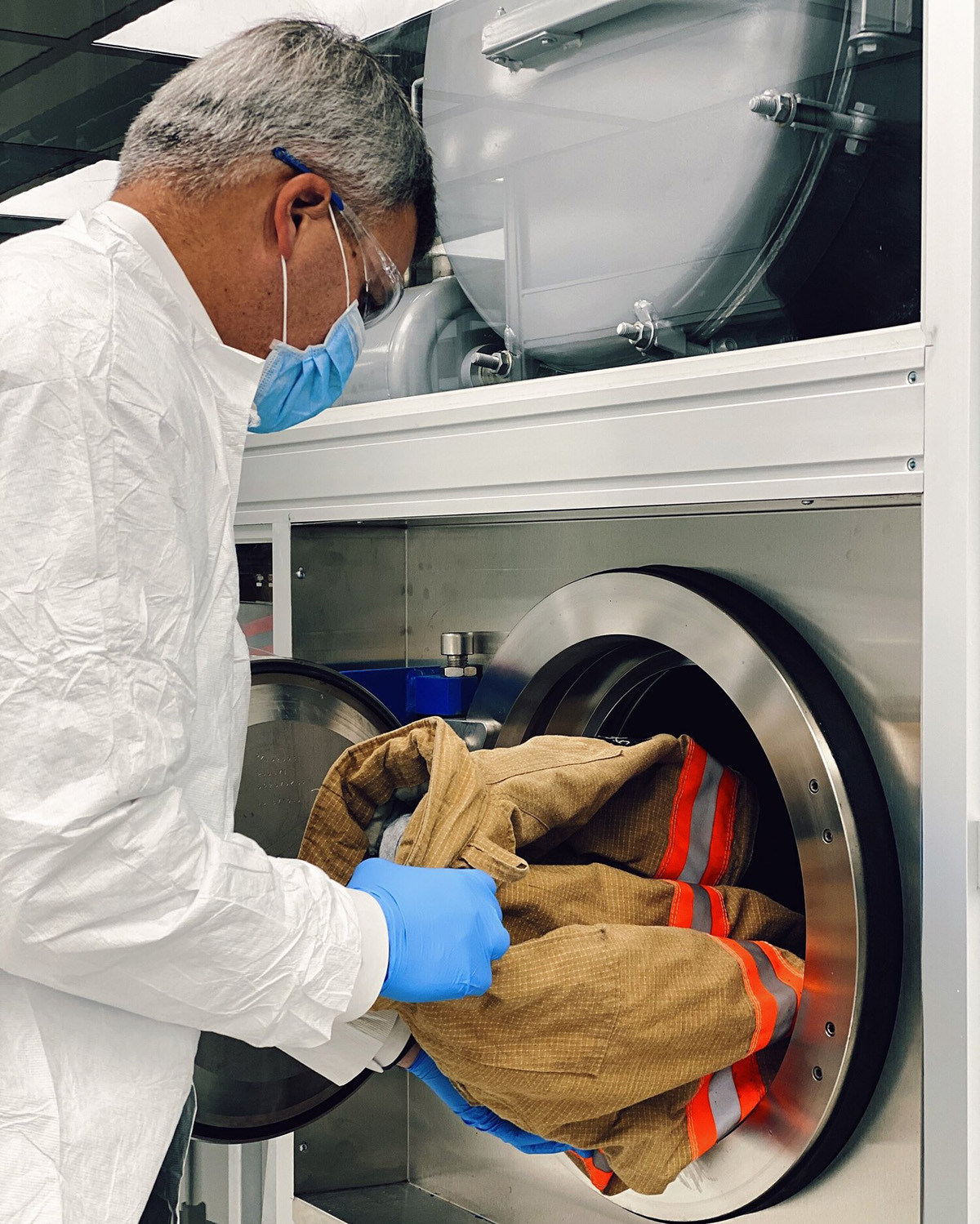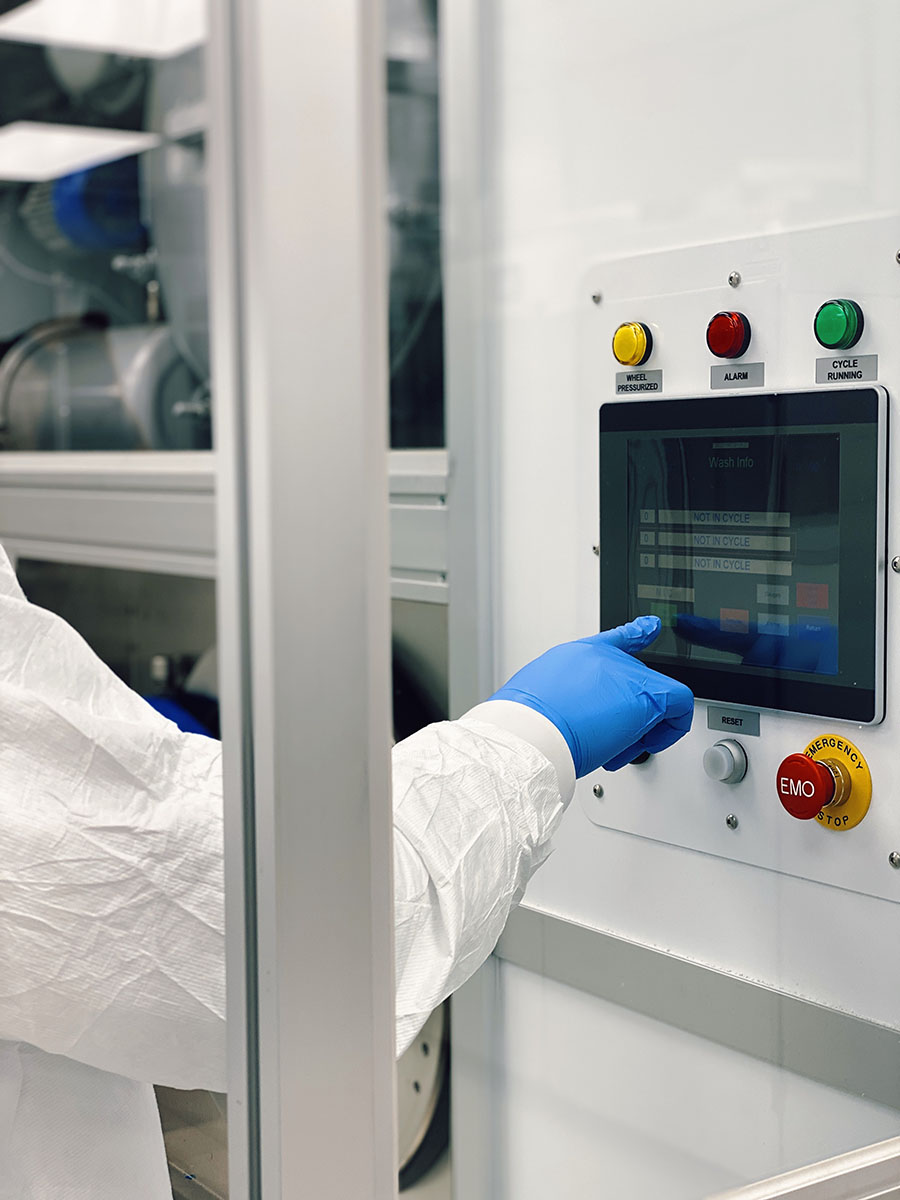By: Emergency Technical Decon Team
The presence of PFAS (per- and polyfluoroalkyl substances) in firefighter protective gear has raised significant concerns in recent years. A recent report from the National Institute of Standards and Technology (NIST) highlighted the alarming prevalence of PFAS in gloves, hoods, and wildland firefighting gear. These chemicals, used to enhance durability and water resistance, have been linked to adverse health effects, including increased risks of cancer, thyroid disorders, and other serious conditions.
As awareness of PFAS-related risks grows, so does the urgency to find effective methods for cleaning and decontaminating firefighter gear. Traditional cleaning methods often fall short, leaving behind substantial PFAS residues. However, emerging research suggests that innovative approaches like liquid CO2 cleaning can offer a safer, more effective alternative.
Understanding PFAS in Firefighter Gear
PFAS compounds have been a mainstay in firefighter gear due to their ability to repel water, oil, and stains. However, studies, including those cited by NIST, show that these chemicals leach from gear over time, exposing firefighters through skin contact and inhalation of particles. This exposure risk is exacerbated during and after fire responses when heat and wear release these harmful substances.
The persistence of PFAS in the environment and their resistance to degradation make them particularly problematic. Standard water-based cleaning processes often fail to remove these compounds effectively, and in some cases, PFAS are merely redistributed or discharged into wastewater systems, further perpetuating contamination.
The Role of Liquid CO2 Cleaning
Recent advancements in cleaning technology offer promising solutions for tackling PFAS contamination. Preliminary testing conducted by CoolClean Technologies, in collaboration with Emergency Technical Decon (ETD), has demonstrated the potential of liquid CO2 cleaning systems to address this challenge.
CoolClean’s CO2+ cleaning system achieved an average PFAS removal rate of 84% during initial tests, with some compounds showing removal rates as high as 97%. These results significantly outperform traditional water-based cleaning methods, which have been shown to remove only a fraction of PFAS compounds. Notably, the CO2+ system not only effectively decontaminates gear but also prevents environmental discharge of PFAS by capturing residues for proper hazardous waste disposal.
Why Liquid CO2+ Cleaning is a Game-Changer
- Superior PFAS Removal: Unlike water-based methods, Liquid+ CO2 cleaning excels in removing persistent compounds like PFAS, ensuring deeper decontamination of gear.
- Gear Preservation: Liquid CO2+ cleaning has been shown to preserve the structural integrity of turnout gear, including sensitive components like moisture barriers.
- Environmental Responsibility: By capturing and safely disposing of contaminants, the Liquid CO2+ system avoids releasing PFAS into wastewater systems, helping to mitigate broader environmental impacts.
Addressing the Broader Risks
The findings from NIST and CoolClean highlight the critical need for solutions that prioritize both firefighter health and environmental safety. As PFAS contamination becomes an increasingly recognized issue, fire departments must adopt cleaning technologies that not only protect their personnel but also align with regulatory and ecological standards.
Efforts to phase out PFAS in manufacturing are underway, but the long lifecycle of firefighter gear and occupational hazards mean contamination risks will persist for years. In the meantime, advanced cleaning methods like Liquid CO2+ offer an immediate and impactful way to reduce exposure.
ETD’s Commitment to Safer Cleaning Solutions
At ETD, we are proud to be the first provider of CoolClean Liquid CO2+ cleaning technologies for the fire service. With CoolClean Technologies, we are refining Liquid CO2+ cleaning systems to enhance PFAS removal and ensure firefighter safety. Our goal is to empower fire departments with solutions that meet the highest standards of decontamination while preserving the performance and longevity of their gear.
As the industry continues to confront the challenges of PFAS contamination, ETD remains dedicated to advancing technologies that make a meaningful difference. Together, we can create safer working environments for firefighters and protect the communities they serve.
If your department is ready to explore the benefits of advanced cleaning technologies, contact ETD today.



